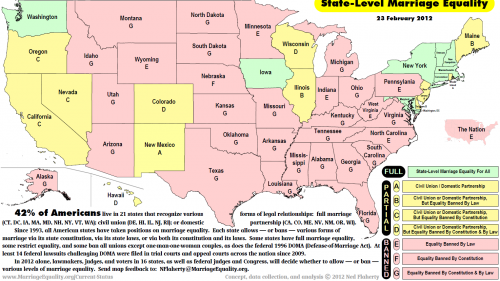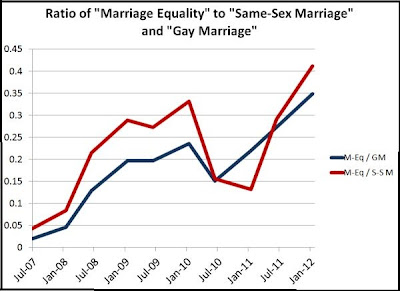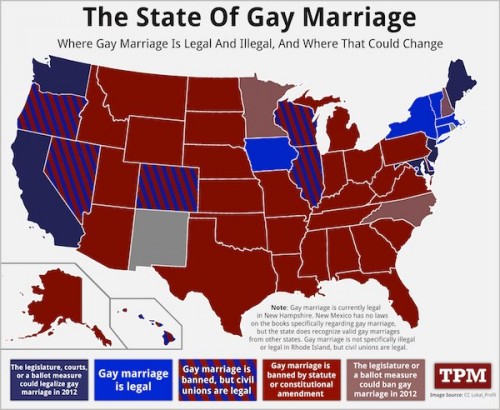A little over a month ago I posted a map of the legal status of same-sex marriage throughout the U.S. It was soon made obsolete by the legalization of same-sex marriage in the state of Washington. In addition, several readers pointed out that the map hid important differences within categories.
Ned Flaherty, Project Manager of Marriage Equality USA, sent in a link to an updated and more comprehensive map at their site. Green states have fully legalized same-sex marriage; yellow states recognize domestic partnerships or civil unions; and pink states do not allow either. The lettered codes provide more information on exactly what the status is in each state:
Click on the map or go to their website to look at the much larger version; they also have a round-up of pending or possible legislation and court cases in various states.














